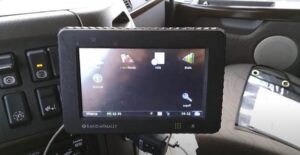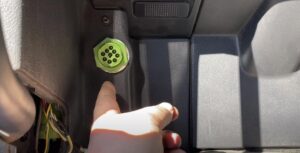
Driving on a spare tire often brings a mix of emotions – relief that you’re not stranded, yet anxiety about how it affects your driving. The key question that pops up is: “How fast can you drive with a spare tire?” This article dives deep into this question, providing you with essential knowledge to keep you safe and your journey smooth.
Understanding Spare Tires
Before we explore the speed aspect, let’s understand what a spare tire is. Typically, there are two types: full-size spares and donut spares (also known as compact or temporary spares). The type of spare you have significantly influences how fast you can drive with a spare tire.
| Type of Spare Tire | Durability and Function | Speed Consideration |
| Full-Size Spares | Similar to regular tires | With a full-size spare, you can usually drive at normal speeds, but it’s crucial to check the tire’s condition and air pressure. |
| Donut Spares | Smaller and lighter | Donut spares are not designed for long-term use or high speeds. They are meant to get you to a tire repair shop or your home, preferably within 50-70 miles. |
How Fast Can You Drive with a Spare Tire?
Donut Spares
Donut spares, also known as compact or space-saver spare tires, are temporary solutions designed for short-term use until a regular tire can be repaired or replaced. Due to their smaller size and reduced capabilities, driving with a donut spare requires specific considerations:
- Speed Limit: Generally, it’s recommended not to exceed 50 miles per hour (80 kilometers per hour) when driving with a donut spare. This speed limit is crucial for several reasons;
- Traction: Donut spares have less traction compared to regular tires. Their smaller contact patch with the road surface means they have less grip, particularly in adverse weather conditions such as rain or snow. Driving at excessive speeds can lead to reduced stability and handling;
- Sturdiness: Donut spares are not as robust as full-size tires. They are designed for short distances and lighter loads. Excessive speed can lead to overheating and potential damage to the spare tire;
- Handling: The handling of your vehicle can be affected when driving with a donut spare, especially during sudden maneuvers or emergency stops. Maintaining a moderate speed helps mitigate these handling issues.
Full-Size Spares
Spare tires that are full size, often called matching or standard spares, are functionally identical to the tires on your car. Although they are more stable and perform better than donut spares, there are a few things to keep in mind when driving with them:
- Speed Match: In most cases, you can usually match the speed of your regular tires when driving with a full-size spare. These tires are designed to provide similar performance and handling characteristics as your primary tires. However, caution is still advised;
- Consistency: To ensure safe and optimal performance when using a full-size spare, it’s essential that the spare tire is in good condition and matches the other tires in terms of tread depth and pressure. Mismatched tires can lead to handling problems;
- Regular Inspection: Full-size spares should be inspected regularly to ensure they are properly inflated, have sufficient tread depth, and are in good overall condition. This helps maintain consistency with your primary tires.
Impact on Driving

When asking, “How fast can you drive with a spare tire?” it’s also crucial to consider how a spare tire affects your vehicle’s performance:
- Handling: A donut spare can significantly alter how your car handles, especially in turns or harsh weather conditions;
- Braking: The difference in tire size can affect braking;
- Wear and Tear: An unmatched spare tire can put extra strain on your vehicle, leading to more wear and tear.
Safety Tips
Here are some safety tips to remember when you’re driving on a spare tire:
- Check Pressure: Always check the air pressure of the spare tire;
- Avoid Highways: If possible, stay off highways and stick to slower roads;
- No Overloading: Don’t overload your car when driving on a spare;
- Regular Checks: Inspect your spare tire regularly, even when it’s not in use.
Conclusion
Understanding how fast you can drive with a spare tire is crucial for your safety and the well-being of your vehicle. Always prioritize safety over speed, and remember that spare tires are a temporary solution. Regular checks and maintenance of your spare tire will ensure you’re prepared for those unexpected flat tire moments.
So, next time you find yourself with a spare tire, remember: it’s not a race. Drive safely, keep within the recommended speeds, and you’ll be on your way to a stress-free journey.
FAQ
Q: How long can I drive on a spare tire?
A: For a donut spare, try to limit use to 50-70 miles. A full-size spare can be used longer, but it’s best to replace or repair your regular tire as soon as possible.
Q: Can I use a spare tire from a different car?
A: It’s not recommended. Spare tires are specific to vehicle types and sizes for safety and performance reasons.
Q: Is it okay to drive a spare tire on the freeway?
A: While it’s not illegal, it’s safer to avoid high-speed roads, especially with a donut spare.
Q: Should I replace a donut spare with a full-size spare?
A: If you have the space and budget, a full-size spare is a better option for longer-term reliability.






